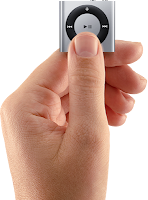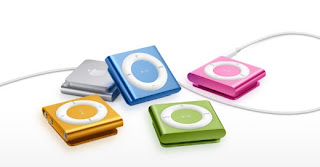So, you're probably wondering, what is this LTC class all about? Okay, you probably weren't wondering that...but now you are. And that's because I used language to shape your thoughts!
Maybe that's not the strongest example, but the idea we're examining is essentially that: can the words we use (or have available to use) shape the way we experience and interact with the world? There may not be an easy answer to the question, but here are a few cool aspects of language to think about when trying to understand the types of questions we'll be addressing. These ideas are based on "Does Your Language Shape How You Think? By Guy Deutscher."
 |
| Remembering word gender, however, is impossible. |
Word Gender
The English language doesn't do much with word gender. If you've got a table, it's a table. Refer to it with the gender-neutral pronoun "it," and you're good to go. But in many other languages, every noun is either "he" or "she," forcing speakers to think about gender more often in everyday speech. In fact, a Spanish speaker, for example, would be unable to tell you, "I was hanging out with my friend last night" without letting slip whether the friend was a girl or a boy; "amiga" or "amigo." In English, we can avoid mentioning it. A subtly, to be sure - but an important one? And what of inanimate objects...is it important whether a violin is masculine (Spanish) or feminine (German)? Would it change how the instrument was perceived - as being powerful or delicate, bold or elegant?
 |
| At least you can't get turned around with these. |
Spacial Relations
In many modern languages, directions can be given with relation to the speaker: "Walk forward, turn left, my dorm is the third door on the right." But in some other languages, these relative directions do not exist; one must exclusively use cardinal directions: "Walk Eastward, turn North, my dorm is the third door to the East." This changes this quite a bit; these speakers are forced, from a young age, to be always aware of where North is, giving them an almost super-human sense of direction. What's more, they may actually perceive (or at least pay attention to) reality differently. Place them, for example, between two long tables, on each of which are placed identical objects. When facing either table, the objects are in the same order, left to right. For people with different sense of direction, these tables are not ordered the same at all; one has the first object Southward, the other Northward...something to which we rarely pay attention. Could this change the way people remember locations or events? What about the sense of the importance of self...for speakers of Guugu Yimithirr, pointing to one's self is actually nothing of the sort; it's pointing through one's self to the cardinal direction happening to lie behind.
Colors (or more accurately, Spectrums)
 |
| Seriously, "orange?" |
Consider the color "orange" - isn't it really just a shade of red? Consider that some languages separate colors differently. In some African languages, there is no distinction between green and blue...in vocabulary, that is. Of course, any human can see the same colors, but if we classify them differently, do we pay attention to different differences? If we had more words to distinguish, for instance, different shades of "blue," might we start to "see," or observe, differences previously ignored? If we stopped using "orange" and just dealt in shades of red and yellow (a notion of which I am a fan), might we begin to give less value to that which is the exact shade of red currently exalted as orange? Already, there are people who split the color spectrum differently in our language...ever have anyone call it "red" when it's clearly "pink," or "blue" when you know it's "navy?" It all depends on which words are in your everyday vocabulary...or your language.
 |
| He's watching you. |
Facts
In the language Matses of Peru, sentences are structured such that you cannot merely state facts, but must include the way in which you came about the knowledge. Any sentence unavoidably contains the differentiation between a fact observed, assumed, relayed from another person, etc. You could not say "Ben is in the room," you would essentially be choosing between "Last time I saw him, Ben was in the room," or "Ben told me that he would be in the room." But you couldn't be certain, since you are not in the room. If one were raised to speak in this way, might he not have a new perception of truth? Of certainty? Of reliability? And think of the implications for the legal system...we'd have to rewrite the hearsay laws!
Time
In Chinese, one needn't think about time when speaking. Whereas in English, one must say "I wrote the Blog post," "I am writing the Blog post," or "I have written the Blog post," this is not necessary; the same verb can be used for all three. Do speakers of the language, therefore, pay less attention to sequence of events? Or, at the very least, are they concentrating less on the timing and more on the substance of events?
The list goes on, and the point is not necessarily that language constrains or changes that which its speakers can think, but perhaps that language affects what its speakers tend to think about most. As more exotic examples, clever situations, and fascinating possibilities arise, you will find them here.



















